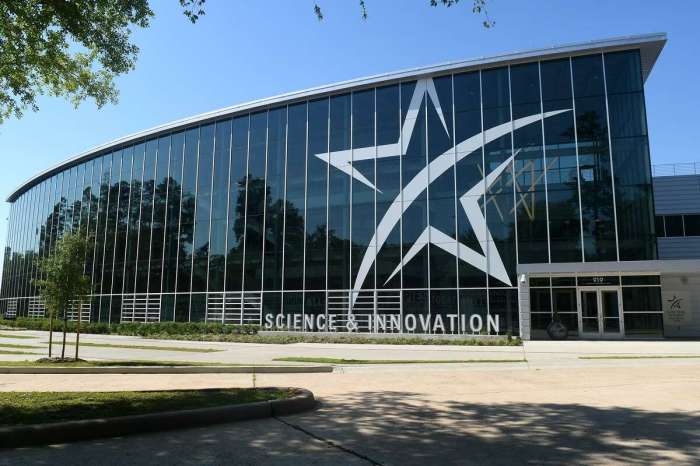Biol 2401 lone star college – Welcome to the captivating world of biology at Lone Star College! Embark on an extraordinary journey through the wonders of life, from the microscopic realm of cells to the intricate tapestry of ecosystems.
In BIOL 2401, we delve into the fundamental principles that govern living organisms, exploring the structure and function of cells, the intricate dance of metabolism, and the fascinating story of evolution. We’ll unravel the mysteries of genetics and witness the interconnectedness of all life on Earth.
Course Overview

BIOL 2401 at Lone Star College is an introductory course in biology that provides a comprehensive overview of the fundamental principles and concepts of life. The course aims to equip students with a solid understanding of the structure and function of living organisms, their diversity, and the processes that govern their interactions with the environment.
The course is structured around several key topics, including:
- The chemical basis of life
- Cell structure and function
- Metabolism and energy production
- Genetics and heredity
- Evolution and the diversity of life
- Ecology and the interactions between organisms and their environment
Students will be assessed through a combination of methods, including exams, quizzes, and assignments. The course also includes laboratory exercises that provide hands-on experience with biological concepts and techniques.
Course Objectives
Upon completion of BIOL 2401, students will be able to:
- Explain the fundamental principles of biology and the scientific method.
- Describe the structure and function of cells, including organelles and macromolecules.
- Understand the processes of metabolism, energy production, and photosynthesis.
- Explain the principles of genetics and heredity, including Mendelian inheritance and molecular genetics.
- Describe the process of evolution and the evidence supporting it.
- Understand the diversity of life on Earth, including the major groups of organisms and their adaptations.
- Explain the principles of ecology and the interactions between organisms and their environment.
Biological Molecules

Biological molecules are the building blocks of life and perform a wide range of functions in living organisms. They include carbohydrates, lipids, proteins, and nucleic acids.
Carbohydrates
Carbohydrates are organic compounds composed of carbon, hydrogen, and oxygen atoms. They serve as the primary source of energy for cells and provide structural support to plant cell walls.
- Monosaccharides: Simple sugars like glucose, fructose, and galactose.
- Disaccharides: Two monosaccharides linked together, such as sucrose and lactose.
- Polysaccharides: Long chains of monosaccharides, including starch, glycogen, and cellulose.
Lipids
Lipids are a diverse group of molecules that are insoluble in water but soluble in organic solvents. They include fats, oils, waxes, and steroids.
- Fatty acids: Long chains of carbon atoms with hydrogen atoms attached.
- Triglycerides: Three fatty acids attached to a glycerol molecule.
- Phospholipids: Lipids with a phosphate group attached.
Proteins
Proteins are complex molecules composed of amino acids linked by peptide bonds. They play a crucial role in virtually all cellular processes.
- Structure: Proteins can have different shapes, including fibrous proteins (e.g., collagen) and globular proteins (e.g., enzymes).
- Function: Proteins function as enzymes, hormones, antibodies, and structural components.
Nucleic Acids
Nucleic acids are long chains of nucleotides that store and transmit genetic information. They include DNA and RNA.
- DNA: Double-stranded molecule that contains the genetic code.
- RNA: Single-stranded molecule that plays a role in protein synthesis.
Cell Structure and Function

Cells are the fundamental unit of life, and they come in a variety of shapes and sizes. Eukaryotic cells, which are found in plants, animals, and fungi, are more complex than prokaryotic cells, which are found in bacteria and archaea.Eukaryotic
cells have a number of different components, including the nucleus, mitochondria, and endoplasmic reticulum. The nucleus is the control center of the cell, and it contains the cell’s DNA. The mitochondria are the powerhouses of the cell, and they produce energy.
The endoplasmic reticulum is a network of membranes that folds and transports proteins.All of these components work together to maintain cellular homeostasis. Cellular homeostasis is the process of maintaining a stable internal environment within the cell. This is important because it allows the cell to function properly.
Cell Division
Cell division is the process by which cells reproduce. There are two main types of cell division: mitosis and meiosis. Mitosis is the process by which a cell divides into two identical daughter cells. Meiosis is the process by which a cell divides into four daughter cells, each with half the number of chromosomes as the parent cell.Mitosis
is used for growth and repair, while meiosis is used for sexual reproduction.
Metabolism

Metabolism encompasses the biochemical reactions that occur within living organisms, essential for their survival and proper functioning. It involves the breakdown of complex molecules to obtain energy and the synthesis of new molecules to support growth and repair.
Metabolic pathways are categorized into two main types: catabolism and anabolism. Catabolic pathways break down complex molecules into simpler ones, releasing energy in the process. Anabolic pathways, on the other hand, utilize energy to synthesize complex molecules from simpler precursors.
BIOL 2401 at Lone Star College is a comprehensive course that delves into the fascinating world of biology. If you’re seeking additional insights into this subject, consider exploring the insightful resource available at pobre ana pdf in english . This valuable document offers a comprehensive overview of various biological concepts, making it an excellent supplement to your studies in BIOL 2401 at Lone Star College.
Glycolysis
Glycolysis is the initial stage of cellular respiration, occurring in the cytoplasm of cells. It involves the breakdown of glucose, a six-carbon sugar, into two molecules of pyruvate, a three-carbon molecule. This process generates a small amount of energy in the form of ATP (adenosine triphosphate), a molecule that serves as the primary energy currency of cells.
Krebs Cycle
The Krebs cycle, also known as the citric acid cycle, occurs in the mitochondria of cells. It is a series of chemical reactions that further break down pyruvate, releasing carbon dioxide and generating additional ATP molecules. The Krebs cycle also produces high-energy electron carriers, NADH and FADH2, which are utilized in the electron transport chain.
Oxidative Phosphorylation
Oxidative phosphorylation is the final stage of cellular respiration, occurring in the inner membrane of mitochondria. The high-energy electron carriers produced in the Krebs cycle are used to generate a proton gradient across the mitochondrial membrane. This gradient drives the synthesis of ATP through a process called chemiosmosis.
Regulation of Metabolism
Metabolic pathways are tightly regulated to maintain energy balance within cells and organisms. Hormones, such as insulin and glucagon, play a crucial role in regulating metabolism. Insulin promotes the uptake of glucose into cells, while glucagon stimulates the release of glucose from the liver.
Feedback mechanisms also contribute to the regulation of metabolism. When ATP levels are high, the activity of glycolysis and the Krebs cycle is inhibited, preventing excessive energy production. Conversely, when ATP levels are low, these pathways are stimulated to generate more energy.
Genetics
Genetics, the study of heredity and variation, is the cornerstone of modern biology. It explores the mechanisms by which traits are passed from one generation to the next, providing a deeper understanding of the evolution and diversity of life.
Principles of Genetics
Genetics, founded by Gregor Mendel’s pioneering work in the 19th century, revolves around two fundamental principles: Mendelian inheritance and molecular genetics. Mendelian inheritance, based on Mendel’s experiments with pea plants, established the concept of discrete units of inheritance called genes.
These genes occur in pairs, one inherited from each parent, and segregate independently during gamete formation. Molecular genetics, on the other hand, focuses on the molecular basis of inheritance, exploring the structure and function of DNA and RNA, the molecules that carry genetic information.
DNA and RNA
DNA (deoxyribonucleic acid) and RNA (ribonucleic acid) are the essential molecules that store and transmit genetic information. DNA, a double-stranded helix, serves as the blueprint for all cellular activities, encoding the instructions for building proteins and other molecules. RNA, a single-stranded molecule, plays a crucial role in protein synthesis, carrying the genetic information from DNA to the ribosomes, the cellular machinery responsible for protein production.
DNA Replication, Transcription, and Translation
The central dogma of molecular biology Artikels the flow of genetic information from DNA to RNA to protein. DNA replication, the process of copying DNA, ensures the faithful transmission of genetic material during cell division. Transcription, the synthesis of RNA from a DNA template, produces messenger RNA (mRNA), which carries the genetic code to the ribosomes.
Translation, the final step, involves the decoding of the mRNA sequence by ribosomes, leading to the synthesis of proteins.
Evolution

Evolution is the process by which populations of organisms change over generations. It is driven by the forces of natural selection, which favors individuals with traits that make them better adapted to their environment.The theory of evolution by natural selection was first proposed by Charles Darwin in
1859. Darwin’s theory is based on the following observations
- Variation: Individuals within a population vary in their traits.
- Inheritance: Traits are passed down from parents to offspring.
- Overproduction: Populations tend to produce more offspring than can survive and reproduce.
- Competition: Individuals compete for resources such as food, water, and mates.
These observations led Darwin to conclude that individuals with traits that make them better adapted to their environment are more likely to survive and reproduce. Over time, this can lead to significant changes in a population.
Evidence for Evolution
There is a wealth of evidence to support the theory of evolution, including:
- Fossil records: The fossil record shows a clear progression of life forms from simple to complex over time.
- Comparative anatomy: The anatomy of different organisms shows striking similarities, even if they live in very different environments. This suggests that they share a common ancestor.
- Molecular biology: The study of DNA and other molecules has shown that all living organisms are related to each other. The more closely related two organisms are, the more similar their DNA will be.
Mechanisms of Evolution
There are a number of different mechanisms that can drive evolution, including:
- Mutation: Mutations are changes in DNA that can introduce new traits into a population.
- Genetic drift: Genetic drift is the random change in the frequency of alleles in a population.
- Gene flow: Gene flow is the movement of alleles between populations.
These mechanisms can all lead to changes in the genetic makeup of a population, which can in turn lead to changes in the phenotype of the population.
Ecology

Ecology is the study of the interactions between organisms and their environment, including both biotic (living) and abiotic (non-living) components. It encompasses the study of populations, communities, and ecosystems, and how they are affected by various factors.
Ecology is a complex and interdisciplinary field that draws on principles from biology, chemistry, physics, and mathematics. It is essential for understanding the natural world and the challenges facing our planet, such as climate change and biodiversity loss.
Population Ecology
Population ecology is the study of the dynamics of populations, including their size, growth rate, and age structure. Population ecologists study how these factors are influenced by environmental factors, such as food availability, predation, and disease.
Population ecology is important for understanding the health and stability of ecosystems. For example, if a population of a particular species declines too much, it can have a ripple effect on other species that depend on it for food or shelter.
Community Ecology
Community ecology is the study of the interactions between different species within a community. Community ecologists study how these interactions affect the abundance, distribution, and diversity of species.
Community ecology is important for understanding how ecosystems function. For example, the presence of a predator species can help to control the population of a prey species, which can in turn affect the abundance of other species that depend on the prey species for food.
Ecosystem Ecology, Biol 2401 lone star college
Ecosystem ecology is the study of the interactions between organisms and their abiotic environment. Ecosystem ecologists study how these interactions affect the flow of energy and nutrients through ecosystems.
Ecosystem ecology is important for understanding how ecosystems provide services to humans, such as food, water, and clean air. It is also important for understanding how ecosystems are affected by human activities, such as pollution and climate change.
Question & Answer Hub: Biol 2401 Lone Star College
What are the prerequisites for BIOL 2401?
High school biology and chemistry or equivalent.
What is the course format?
A combination of lectures, labs, and discussions.
What are the assessment methods?
Exams, quizzes, lab reports, and assignments.
Can I take this course online?
Yes, it is available both in-person and online.
What career opportunities are available with a background in biology?
Research scientist, healthcare professional, environmental consultant, educator, and more.